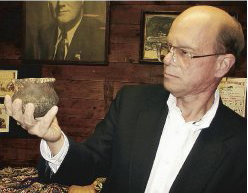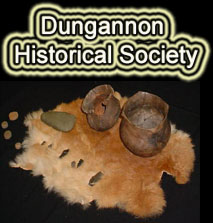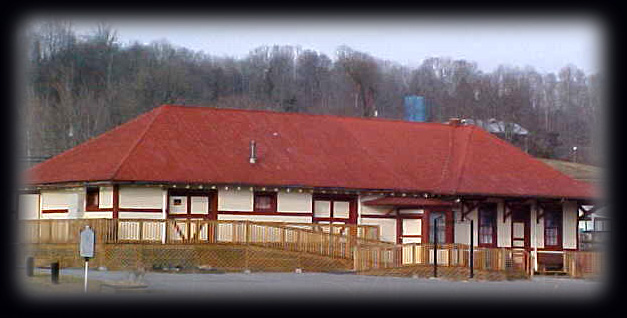Dungannon Depot Named Historic Landmark
The 100-year-old building, which now serves as the Dungannon Town Hall, was one of two historic train depots to be added to Virginia Landmarks Register.
Dungannon Mayor Karen Powers said the designation will help the town’s efforts to promote heritage-based tourism in the area.
“This will help to boost the economy of not only the merchants and residents of the town of Dungannon, but all the surrounding areas in Southwest Virginia,” Powers said. “The residents and merchants in small, rural areas have suffered tremendous financial hardships during these tough economic times, and we hope to turn that around by promoting the history and heritage of these areas.”
In addition to promoting tourism, the recognition will also help preserve the depot’s historical significance, said Dungannon Development Commission Executive Director Travis Perry, who led the initiative to include the depot on the registry.
“We’re just trying to promote the town’s past by keeping the history alive,” Perry said. “We do things like this to keep it from dying out.”
The depot is currently being considered for inclusion on the National Historic Landmarks Register, he said.
Perry said the depot’s 100th anniversary would serve as the theme for this summer’s Mountain Treasures Festival, which is held annually in Dungannon.
The Dungannon Depot was built in 1910 on the Carolina, Clinchfield and Ohio Railway and was used by passenger trains until 1955.
It sat vacant until 1978, when it was moved to its current location on Third Avenue by the Dungannon Women’s Club before being renovated.
The depot is the 11th property in Scott County — and third in the Dungannon area — to be included on the Virginia Register of Historic Places.
Native American artifacts coming home to Dungannon
Sunday, September 19, 2004
By KEVIN CASTLE
Times-News
DUNGANNON - A significant archeological find was discovered under the hills of Betty Salyer's home place in the 1970s.
With the help of state funding, she hopes to bring some of the items back to Scott County for future generations to study.
The Dungannon Historical Society displayed several documents and artifacts, including some that were taken from a significant dig in 1977 that are currently displayed and cataloged in Richmond by the Virginia Department of Historic Resources.

"I can remember the ground being plowed when I was little and several arrowheads coming out whenever the ground was turned. We knew it was something special then,'' said Salyer.
"It has been emotional because I was not able to see these items at the time in the 1970s when they were discovered and taken to Richmond. What the group would like to do is establish something here in Dungannon to where the items could be permanently displayed.''
Established in 1832 according to Salyer, the site is located just off Route 65 along the Daniel Boone Heritage Trail.
Clifford Boyd, professor of anthropology at Radford University, has studied the site and calls it "very interesting" in terms of historical significance of the first signs of Native American inhabitance in the southwestern part of Virginia.
"The site had some artifacts that were found that suggest there was some Native American contacts with those areas south and southwest of (Dungannon) in Tennessee and North Carolina,'' said Boyd.
"This means they carried on either trading or family relationships with people in those areas. These are classified as Mississippian Period culture artifacts that go back about 1,000 years.
"A couple of pots that were recovered are very unusual because of their shape for that time, again relating to relationships with people to the south. It is a truly historic location.''
The site has also been examined for its significant inclusion in the region's Anglo-American settlement history, Boyd said.
A cabin erected on the site dates back to the 1700s and was known as Osborne's Ford, which was a stop for settlers along the Clinch River.
Further research showed that a two-story structure was built and by 1832 was the location of a post office and ferry crossing.
That cabin still stands, Salyer said, and probably has historical items buried beneath it.
"I think there is a lot more history to be discovered there at the cabin. We hope that more people will get involved so that we can preserve this site for our grandkids to appreciate,'' she said.

